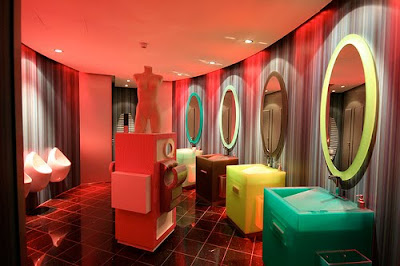
A storefront on a London street: There's a legendary story of American painter James Whistler testifying in court against British art critic John Ruskin. The artist sued for libel following a review in which Ruskin charged the painter for his casual and thoughtless use of paint in a particular work. (Actually, the word Ruskin used was "splattering.") Asked how long it'd taken him to complete the painting Whistler replied, "two days." The question implying that 200 guineas for such a work was entirely too generous. But it wasn't for his labor that Whistler had asked such a price. Said he, "I ask it for the knowledge of a lifetime."
The decision to paint the storefront in brilliant orange may've come to the designer in a lark. But the ability to initiate such a lark, well, that could only result from an artist's long and arduous journey.
Brilliant orange, indeed.



























